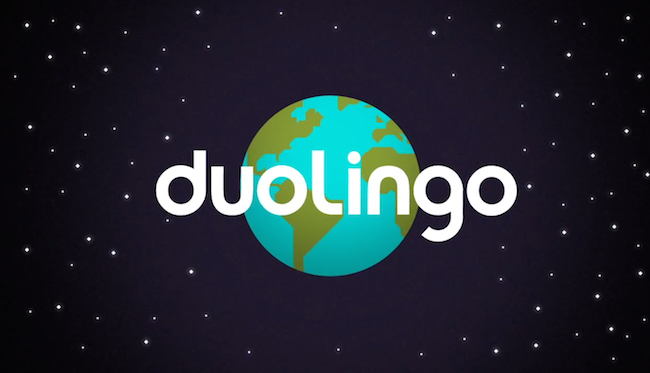My first encounter with Duolingo was purely coincidental. It was a lazy Friday night and I was scrolling down my Facebook feed, when I chanced upon a widely shared piece by Business Insider about the successful ventures of a serial entrepreneur – Luis von Ahn.
Curious, I gave the article a quick read, and soon found myself quickly absorbed by von Ahn’s innovativeness.
The theory underlying his business model sounds simple: To solve the problems faced by society through massive-scale online collaboration.
Duolingo, which is von Ahn’s latest project, encompasses this very theory, by allowing more people to learn a new language for free while simultaneously translating the web. This is possible because of the product’s clever monetizing strategy, where users are actually translating documents for companies such as Buzzfeed while picking up exercises. With Duolingo, von Ahn is effectively killing two birds with one stone by letting users create real value while learning.
Having read enough of the article to pique my interest, I decided to download Duolingo; joining the product’s 25 million other users in the quest for free language education.
Getting started
Upon signing up, I was offered a selection of 6 available language courses on Duolingo: English, Portuguese, Spanish, French, German, and Italian. I decided on Spanish, which I have always wanted to learn as my third language, after English and Chinese.
To get things going, Duolingo got me started from scratch on the Basics.
In my very first lesson, I was introduced to simple nouns such as hombre (man), mujer (woman), Niño (boy), and Niña (girl). For each exercise, I was asked to transcribe, translate, fill-in-the-blanks, and verbalize. What surprised me though is how quickly I got hooked onto the lessons. Having started Duolingo with zero expectations, the app was proving itself to be a holistic platform for beginners like myself. Duolingo effectively zoomed in to the necessities for building a good foundation in language: oral aptitude, listening skills, and comprehension abilities.
As I progressed down the Duolingo skill tree, I was introduced to more complicated vocabulary and tenses. In total, the Spanish curriculum covers 1571 words. The transition from each level was straightforward and intuitive with no sudden jump in difficulty, which also helped me gain confidence in learning the language.
With more vocabulary being introduced, it was also necessary to repeat lessons for revision. Allocating an hour of my morning, daily, I had completed slightly more than two-thirds of the Spanish skill tree, earning myself a Level 10 in the course after 3 months. This progress was genuinely thrilling.
Duolingo’s real draw: Gamification
So, what is the real draw of Duolingo? What makes it so successful that its the first ever language app to snag Apple’s 2013 App of the Year?
Well, Duolingo is fun, really fun.
In fact, von Ahn has been cited in interviews, revealing that its biggest direct competitor is Candy Crush and not some other language education app. By injecting gaming elements into the product, Duolingo sees itself more as a game where users can actually learn something useful.
Progressing through the lessons, I was starting to see the appeal of Duolingo. Through its gamification model, I felt egged on to complete every stage with perfection. With every course, I was given 3 lives in the form of hearts. Even if I failed one, all I had to do was repeat the course with no penalty. I was also rewarded virtual currency in the form of “lingots” and could use it to purchase items from Duolingo’s virtual shop.
However, the gaming feature, which I found really useful, was the “Practice” mode. I could choose to duel either a Duolingo user or “Duobot” in a timed challenge of 30 seconds for each question. I was tested on skills, which I previously learned, and every failed challenge, motivated me to review past lessons.
If the market was searching for a language education app that is not only free yet seriously addictive and fun, it does seem that the team at Duolingo has found the perfect formula for it.
So, Fad or Future?
Many apps on the mobile market have rose from obscurity to prominence and then gradually lost its appeal. Will Duolingo be another fad casualty?
Critics quip that one of Duolingo’s biggest flaws is the impracticality of its translation exercises. Instead of aiding users in learning useful sentences for real-life situations, most of the content for translation is stringed randomly from various websites. This implies that translating these sentences can be unfruitful and sometimes, even downright senseless. For those who are interested, there is even a Tumblr website dedicated to weird phrases found on Duolingo.
Another qualm about Duolingo is that its inadequate in helping users gain conversational fluency in a language.
A couple of weeks ago, a Spanish friend of mine invited me to dinner with some of his friends. Whenever they communicated in Spanish, I was unable to even muster a response, although my experience with Duolingo did help me understand some semblance of their conversation. I was becoming fast aware of the fact that Duolingo is hardly a substitute, but merely a supplement for real-life interaction and academic learning of the language.
The future of education?
A study has shown that all it takes for a user to learn the equivalent of a first college semester’s worth of Spanish is to spend 34 hours on Duolingo. Although one cannot gain full fluency with the product, basic proficiency is well within reach. Upcoming features such as a – Duolingo Language Certification – that enables users to prove their proficiency in a certain language for possible employment, is also a sure sign of the product’s determination to stay relevant.
In today’s mobile age, Duolingo seems to be doing so many things right. Despite its shortcomings, it has gained huge success in gamifying language education. Not only has it roused the interests of many to learn a new language, it has made us rethink the erstwhile model of education.
Duolingo’s breakthrough spells the beginning of new opportunities for even greater education apps to come, inspiring change in the future of our education.
We should all be excited.
This article is written by Colleen Yap




















